
Purpose The purpose of this study was to examine the relationship between performance factors and physical fitness in secondary school female biathlon athletes. Participants in this study were 14 female biathlon athletes. Methods All factors such as aerobic capacity(VO2max, %AT), wingate test(peak power, average power, fatigue index), isokinetic test(trunk, knee, hip, ankle), 1RM test(leg press, chest press, lat pull down), physical fitness(grip, knee and back muscle strength, sit & reach, power, agility) were tested. In order to analyze collected data, pearson product moment and multiple regression analysis were utilized. The results were summarized as follows : First, there was a significant correlation between aerobic. Results The results were summarized as follows : First, there was a significant correlation between aerobic capacity and three factors(standing broad jump, isokinetic test 60° right knee extension)(p<.01). There was a significant correlation between wingate test and four factors(isokinetic test 30° left ankle ever, 30° right ankle ever, 120° left ankle inver, leg press)(p<.10). Conclusion These results suggested new evidence that ankle strength is necessary for performance in female biathlon athletes.


This study aimed to analyze the patterns of service return and the 3rd stroke in relation to the winning and losing points in Badminton men's doubles matches. Especially the comparison of the patterns between rally point and service server game systems was made. Video records of 12 top elite teams were analyzed. As a result, there were significant differences in the total stroke patterns between the rally point system and the server game, and there was a higher offensive stroke tendency. After classification of situations with ‘after the service trial’ and ‘after the service return’, there were high number of winning ratio and offensive stroke in the after the service situations. There were no significant difference in the winning/losing points and winning ratio when the types of 3rd shot attempts were analyzed. I case of the win and lose in service return, there was a significant difference in the server game while not in the rally point system. Offensive stroke ratio in the server’s return categories and the service return strokes’ categories, and was no difference in shots after the return of service in the server team. From the investigation of offensive stroke ratio and winning ratio, there was a high ratio in the rally point system game but no difference in the server game. When aggressive service return took place, rally point system had higher winning ratio, but the server game system did not display such characteristic. Based on these results, recommendations of service anticipation and aggressive plays for Korean Men's doubles game have been suggested.

This study was to explore the factors influencing Olympic performance positively and negatively. In order to achieve this purpose, 60 athletes, who participated in 2012 London Olympic games, responded on open-ended questionnaire. In addition, 10 athletes, who won medals in London Olympic, responded on in-depth interview. Collected data were analyzed by deductive content analysis. The results of this study were as follows: firstly, the factors influencing Olympic performance positively were psychological preparation, strengthening training, physical conditioning, support from significant others, material support, cheering of Korean people, self respect as a Korean national athlete, different game environment, team cohesion, sharing Olympic experience, and support of sports science. Secondly, the factors influencing Olympic performance negatively were psychological pressure, excessive expectation, negative interpersonal relationship, condition decline, overtraining, unstable environment, insufficient facilitation, decrease in performance level, and especially ineffective village room placement and media management during Olympic period. Thirdly, the differences between Olympic games and other world competitions , perceived by athletes were competition scale, psychological attitude, training support, systematic preparation, and benefits from winning medals. The results of this study will give fundamental information in developing a scale which can measure Olympic preparation level and in developing Olympic preparation guideline. Therefore, it will help athletes ,who participate Olympic for the first time or athletes who did not perform well in pre-participated Olympic games, to understand and apply in training the factors influencing Olympic performance and help them to perform better in Olympic games.
PURPOSE This study aimed to extract football coaches’ categories of performance evaluation factors (PEF) and examine the reflective characteristics of the football coaches’ player and casting judgments. METHODS PEF were extracted through an open-ended questionnaire and categorization from 80 AFC C or higher football coaches. Reflection was calculated in player and casting judgments through an analytic hierarchy process. The difference between the football coaches’ player and casting judgments was examined using SPSS 21.0. RESULTS First, the PEF of football coaches were categorized into four general categories: physical intelligence, psychological intelligence, growth potential, and competition intelligence. Second, the importance of football coaches’ player judgments were reflected by the PEF as football intelligence, situation judgment, football talent, tactical understanding, tactical operation, etc. The importance of the casting judgment were reflected by the PEF as tactical understanding, mediative skills, fitness, tactical operation, situation judgment, etc. Third, a statistically significant difference was noted between player and casting judgments. Football coaches tended to value growth potential and talent as sub-factors in the player evaluations. Football coaches’ PEF were aligned with the importance of player and casting judgments in psychological and competition intelligence as sub-factors such as skills, physical, attitude, passion, etc., but differed from physical intelligence and growth potential as sub-factors including mediative skills, physical, football talent, and tactical understanding. CONCLUSIONS In the football coaches’ player evaluations, the idealistic principle centered on growth potential. However, in the casting evaluation, the realistic principle centered on victory takes effect.

This study has analyzed 33 domestic games and 26 overseas games by targeting women curling teams of home and abroad, and looked into what main performance variables are, how level differences of domestic team appear, and from which variables differences between winning team and defeated team come out in overseas teams. Also, main strategies has been suggested that are used most commonly for kick-off offense and latter offense, blank strategy in order to prepare countermeasures, and digital media DB has been constructed that can utilize proper countermeasures easily and simply, and a model has been proposed for predicting victory/defeat. To accomplish such goal, a variance analysis has been carried out by dividing domestic teams into each level after calculating frequency and ratio with SPSS18.0, and t-test analysis has been carried out by overseas teams. Also, the accuracy of victory/defeat classifications has been suggested by using an artificial neural networks method. As a result, a lot of technical proficiency differences have appeared among Class A(upper rank), Class B(middle rank), and Class C(lower rank) in domestic teams. The ‘Guard’ which is an aggressive variable has turned out to be used more in upper and middle teams than in lower team, and the ‘Tab Back’ has been used more in upper rank than in lower rank. Furthermore, regarding the average comparison on victory/defeat in international games, victory teams have more significant difference(p<.05) than defeated teams in accuracy of shot techniques and strategy accomplishing abilities, and victory teams have been turned out to use less ‘Drew’ and more ‘Take’ than defeated teams significantly in Drew and Take’ technique variable. Finally, the accuracy of a prediction model has been 91.7% for learning and 92.9% for the test result to predict the victory/defeat in international games through the artificial neutral network analysis. The prediction accuracy of domestic games was 81.0% for learning and 71.4% for the test.


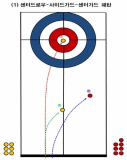

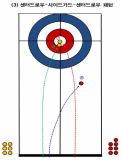
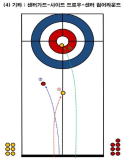

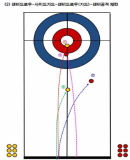
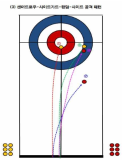
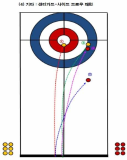
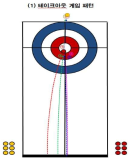
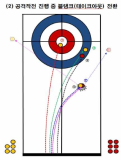

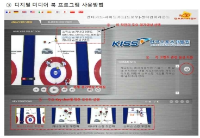


Purpose The purpose of this study was to provide useful information on the improvement of performance by measured the psychological-physiological stresses experienced by elite shooters during a competition. Methods Thirty-eight elite shooters participated in this study (Male = 13, Female = 25). Psychological stress was measured and used for this study based on the stress factors found in the elite target stress study by Park(2015). The cortisol, a physiological stress hormone, was measured using saliva. Results The reliability of the psychological stress sub-factor pre-post analysis results showed no statistically significant. The concentration of cortisol measured on the day before the competition (0.1704 µg/dL) significantly increased immediately before the competition (0.3558 µg/dL). Cortisol immediately before the competition showed negative correlation (r=-.361, p=.036) with the competition score, and the regression variable of cortisol was 13%. Conclusions In this study, physiological stress had a negative effect on elite shooters performance compared to psychological stress.

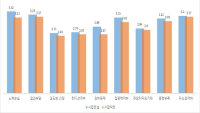


The purpose of this study was to confirm the differences between winner and loser groups of national team participated in the World Taekwondo Championships statistically and trends of psychological status according to applying mental coaching. In order to achieve the purpose it was the selection of 16 national members participated in the 2013 World Taekwondo Championships in Puebla. Data was selected by TOPS(test of performance strategy). The survey was conducted before and after applying the mental coaching and the game soon after. Data processing results were calculated utilizing Excel and SPSS 21.0 version. Based on the findings issue the conclusions were as follows. First, the psychological state of the winner and loser groups showed a different trend in the self-talk, emotion control, performed automatically, imagery, struggle, negative thinking, relaxation, condition factor. Winner group was shown maintenance or better trends of psychological state in the three times measurements on the other hand, loser group was shown decrease in the game soon after. Secondly, winner and loser groups are statistically significant differences in the psychological state of competition in self-talk, struggle, negative thinking, solving tension factors. In other words, The winner group had higher score in the four factors than loser group in the competition.

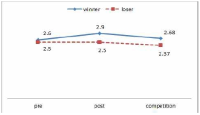
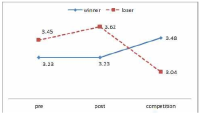
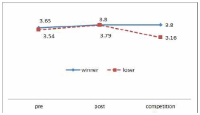
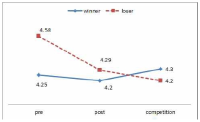

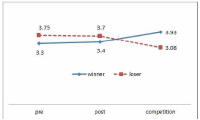
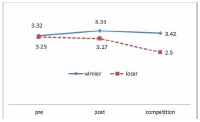
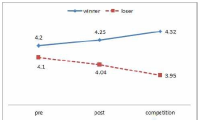
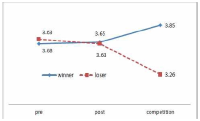
PURPOSE The purpose of this study was to provide information for improving the performance and skills of 500 m speed skaters by analyzing the kinematic and kinetic changes in their slide board movements over time. METHODS The subjects were 10 male short-distance skaters in their 20s to 30s who were registered as professional athletes with the Korea Sports Council. The changes in joint angle, joint moment, and joint power over time in the subjects’ slide board motion were measured and analyzed. RESULTS It was found that during phase 2 of the skater’s slide board movement, there was an increase in plantar flexion and a decrease in flexion of the lower extremity joint and extension of the knee and hip joint, with decrease in positive power of the knee joint. CONCLUSIONS The results of this study are expected to provide practical information to skating coaches and athletes by quantifying the biomechanical factors observed over time during slide board movements. In addition, this study is expected to contribute to the field of speed skating by presenting scientific training methods and proposing new analysis techniques to improve performance in the future.
PURPOSE This study aimed to investigate conditioning management and perception in Korea Ladies Professional Golf Association golfers and elite amateur female golfers. METHODS Physical characteristics and performance-related factors were investigated through a short version of the conditioning questionnaire consisting of 16 questions on five factors, surveying 129 female professional golfers and 174 elite amateur female golfers. The components of the questionnaire included physical fitness (four questions), injury (four questions), nutrition (three questions), mental (three questions), and performance strategy factors (two questions). Data were analyzed using IBM SPSS Statistics ver. 23.0 (IBM Co., Armonk, NY, USA). An independent t-test was used for comparison between groups. RESULTS Physical fitness-related factors showed significant differences in all four questions between groups (p<0.001–0.031), injury-related questions showed significant differences between groups in three questions (p<0.001–0.003), and one nutrition-related question was different between groups (p<0.001). CONCLUSIONS Differences were seen in conditioning management factors recognized between professional and elite amateur female athletes. Future research on conditioning questions and differences in effects according to actual performance will be needed.
PURPOSE This study comprehensively examined the aerodynamic and flight characteristics of modern soccer balls, focusing on their design evolution and performance attributes. METHODS The aerodynamic characteristics of five types of World Cup balls (2006 Germany World Cup, 2010 South Africa World Cup, 2014 Brazil World Cup, 2018 Russia World Cup, 2022 Qatar World Cup) and five types of Euro tournament balls (EURO2008, EURO2012, EURO2016, EURO2020, EURO2024) were examined, along with their respective design changes. RESULTS Through detailed analysis, significant variations in aerodynamic properties among soccer balls used in various tournaments were identified. Recent advancements have resulted in faster transitions towards critical Reynolds numbers, indicating improved stability in flight trajectories. This enhancement was attributed to the augmentation of surface roughness, which plays a crucial role in enhancing aerodynamic stability and overall performance. 2D simulations simulating powerful goalkeeper kicks revealed distinct differences in flight distances among different soccer balls; the Jabulani ball used in the 2010 World Cup exhibited the longest flight distance, while that of the 2024 Euro ball was the shortest. CONCLUSIONS Variations in surface texture significantly impact aerodynamic properties, affecting flight distance, arrival time, and height. This study underscores the significant design enhancements in modern soccer balls that optimize aerodynamic stability and performance, with modifications aimed at improving flight characteristics and enriching player experience.